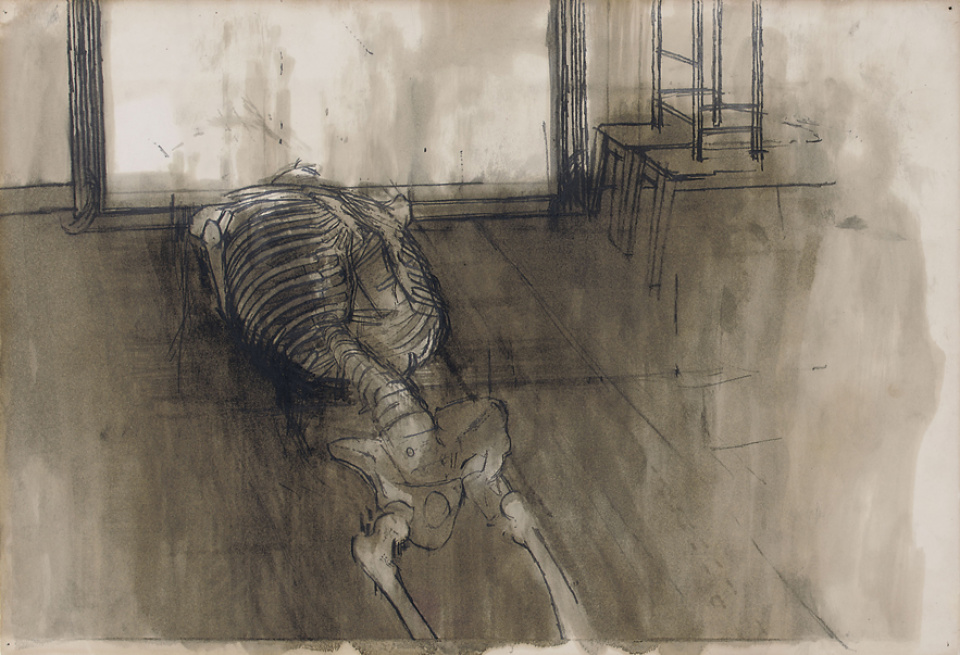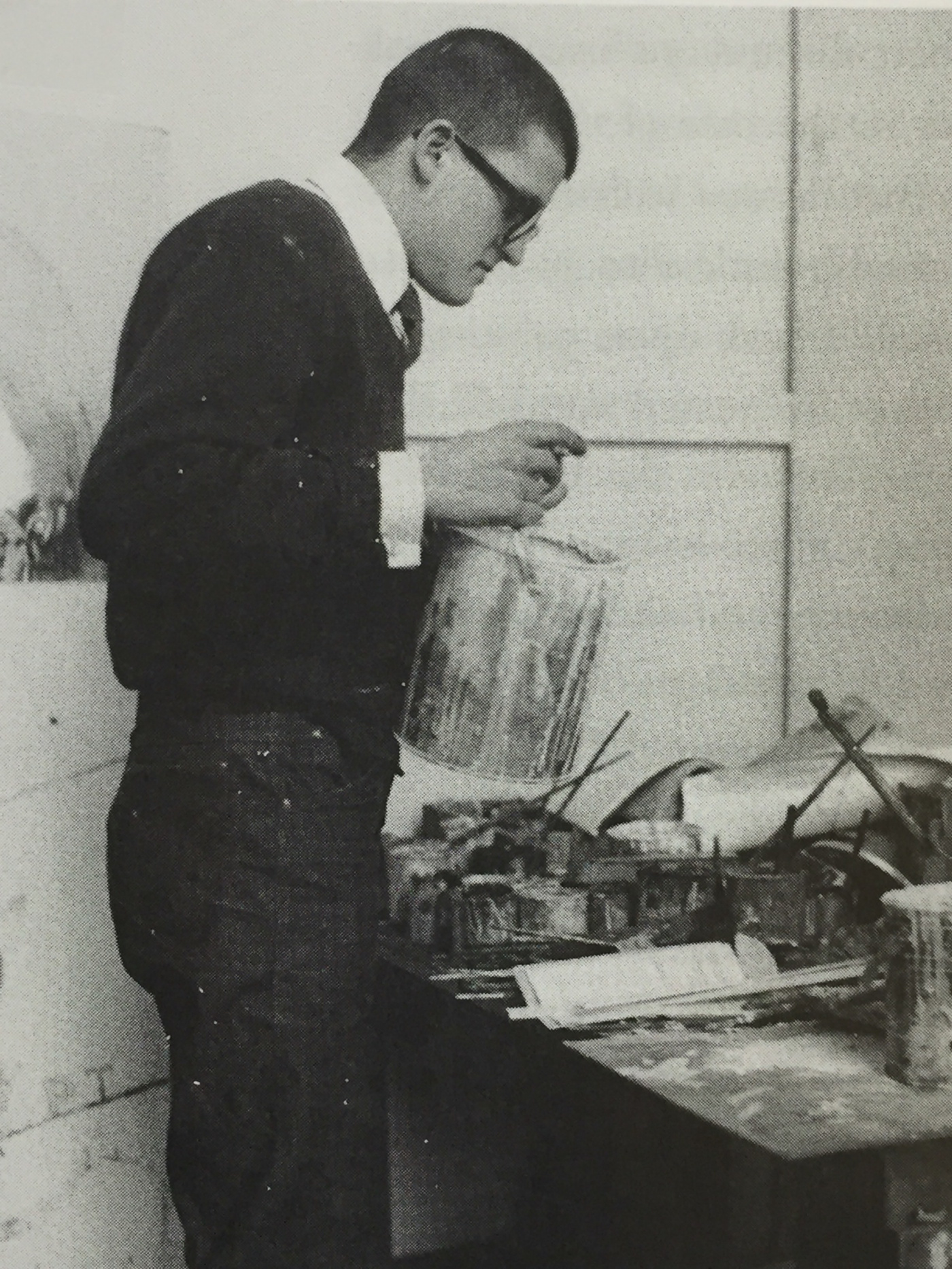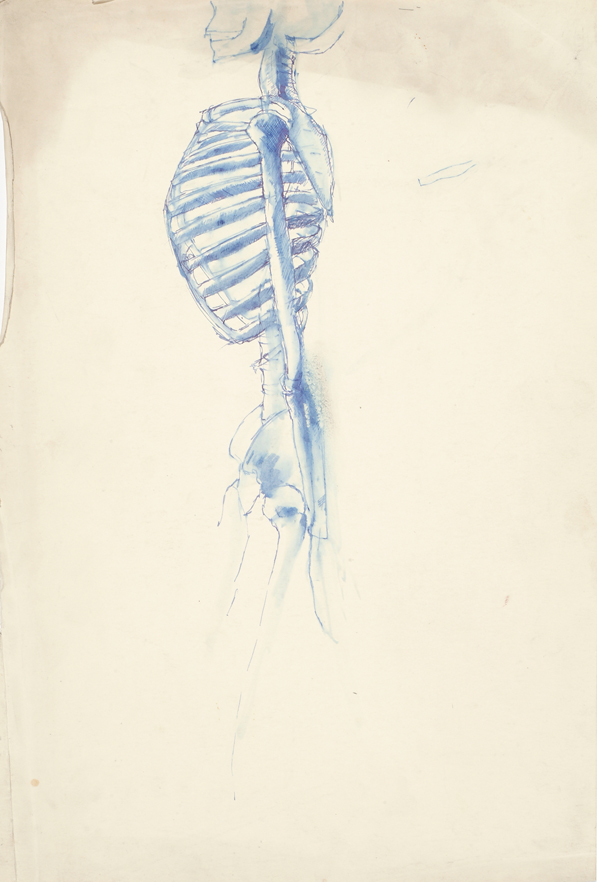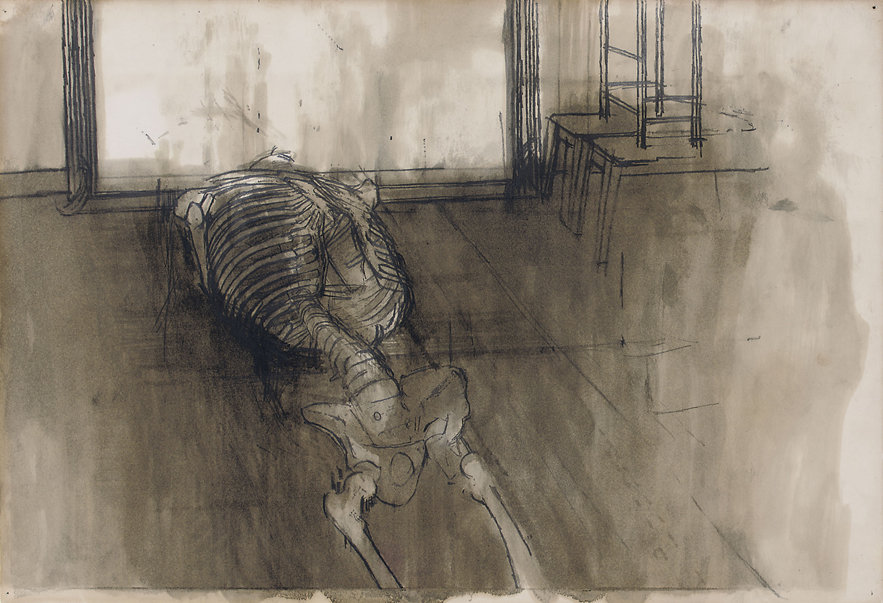
Royal College of Art
Hockney moves to London to study at the Royal College of Art in the autumn of 1959. The prestigious art academy is in a period of flux, and London itself is soon to enter the Swinging Sixties. At the RCA, Hockney studies with tutors Roger de Grey, Ceri Richards, Ruskin Spear, and Carel [NESTED]Weight, whose practices support a continuation of the academic training he received at Bradford School of Art. He also meets with a number of visiting artists whose work represents the artistic currents of the moment, including Francis Bacon, Peter Blake, Richard Smith, and Joe Tilson.

Early friendship with Kitaj
Hockney forms a particularly deep-seated friendship with R. B. Kitaj, an American-born RCA student several years his senior, whose encouragement assuages Hockney’s sense of being something of a country boy from Yorkshire.
Skeleton drawings
To get into the swing of making work in his new environment, Hockney concentrates on drawing a skeleton that hangs at the school. In Kitaj’s recollection, "During our first days at the Royal College, I spotted this boy with short black hair and huge glasses, wearing a boiler suit, making the most beautiful drawing I’d ever seen in an art school. It was of a skeleton. I told him I’d give him five quid for it. He thought I was a rich American. I was—I had $150 a month GI Bill money to support my wife and son. I kept buying drawings from him …."

So I began at the Royal College and I thought, "Well, I haven’t done any drawing for two years, or very little, I’ll make a drawing, a long drawing, to find out what I’ll do in the meantime." And I made two drawings of a skeleton. Each one took about three or four weeks to do: two very academic, very accurate drawings of a whole skeleton, half-life-size.
I was drawing all the time. The one student I kept talking to a lot was Ron Kitaj. Ron was slowly doing these strange pictures, and I talked to him about them and about my work. And I said, "Well, I don’t know, it seems pointless doing it." I’d talk to him about my interests; I was a keen vegetarian then, and interested in politics a bit, and he’d say to me, "Why don’t you paint those subjects?" And I thought, it’s quite right; that’s what I’m complaining about, I’m not doing anything that’s from me. So that was the way I broke it. I began to paint those subjects.
